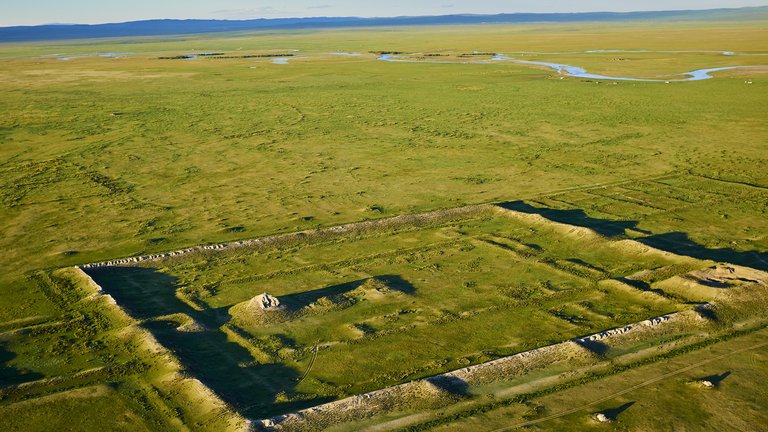News
The British Academy awards 2023-24 Stein-Arnold Exploration Fund to three researchers
28 Mar 2024

The British Academy has announced three Stein-Arnold Exploration Fund awards that will support research into ancient civilisations in Kazakhstan, Uzbekistan and Mongolia.
The Fund was established according to the Will of Sir Aurel Stein FBA, to commemorate his friendship with Sir Thomas Arnold FBA, and it aims to encourage exploratory research on the antiquities, historical geography or arts of ancient civilisations of India, China and Iran, including Central Asia.
Dr Ashleigh Haruda’s project plans to study the use of a medieval trade route known as the silk road. The award of £2800 will allow for the analysis of animal remains from the medieval city of Dhzankent in modern Kazakhstan. The aim being to uncover how flows of animals helped sustain cities and build international connections.
The second project, led by Dr Alexander Parkyn-Smith, will use visual anthropological methods to investigate how artistic traditions are recorded and communicated amongst artisanal craft practitioners in Uzbekistan. The £2,500 award will focus on the creation of a contemporary visual archive of artistic practice in the region.
Dr Katalin Tolnai has been awarded £2,400 to conduct geophysical research of the 10-12th century settlement known as Khar Bukh Balgas in Bulgan county, Mongolia. Dr Tolnai’s research aims to understand the nature of the fortified settlement with a focus on the use of agricultural lands.
The 2023-24 Stein-Arnold Exploration Fund awardees are:
Please note: Awards are arranged alphabetically by surname of the grant recipient.
Dr Ashleigh Haruda
Supplying the Silk Road: Zooarchaeology of Dzhankent
The Silk Road is the most famous global route of international trade, with a peak in the mediaeval period (700-1400 CE), yet the mechanics of transportation and provisioning is still understudied, and in particular, how flows of animals helped to sustain cities and power international connections. This project provides a valuable opportunity to investigate these questions by investigating the remains from the mediaeval city of Dhzankent (Kazakhstan), via zooarchaeological analysis of animal bones and sampling these remains for ancient genetic and isotopic analysis. This will result in both a detailed analysis of the provisioning and subsistence of the people who lived at Dzhankent and valuable insight as to the flows of animals along this route by linking with ongoing regional genetic and isotopic studies, deepening our insight into the diversity sustaining the Silk Road and contributing significantly to our understanding of its enduring stability and resilience.
Dr Alexander Parkyn-Smith
Cultural identity building through artistic traditions: A visual ethnography of the knowledge, practices and communication of entrepreneurial artistic traditions in Uzbekistan
Artisanal craft plays a significant role in Uzbekistan’s current post-socialist identity building. Central to this is the meaning, history and practice of artistic traditions. This exploratory study uses visual anthropological methods, including photography, vernacular image collection, interviews and participant observation to explore how artistic traditions are recorded and communicated amongst artisanal craft practitioners in Uzbekistan. Building upon an existing research project carried out by NURCE at Nazarbayev University in Kazakhstan, this pilot research explores the viability of using visual methods to both record and communicate cultural art practices. This research focuses on visually recording personal life history narratives, creating a contemporary archive of related materials and documenting contemporary artisanal practices. The material created will be used for a pop-up exhibition held within local communities – offering stakeholder engagement, sharing stories across multiple contexts and traditional art/craft practices. It will also produce a contemporary visual archive of artistic practice.
Dr Katalin Tolnai
Khitan settlements and beyond. Comparative analysis of the fortified settlements of Khar Bukh Balgas and Ulaan kherem, Mongolia
The proposed research serves as a continuation of the Khi-Land, Khitan Landscapes in Mongolia 2017-2023 project. The aim of the Khi-Land project was to carry out historical and archaeological research on the 10-12th century, Khitan period fortified settlements of Mongolia. Based on our previous results this proposal presents three main research aims: to understand the hinterland of Khar Bukh Balgas with the help of comparative analysis of the Khitan sites in Bulgan county of Mongolia; to conduct geophysical research on the territory of Ulaan Kherem and to collect aerial photo on the agricultural fields around Khar Bukh Balgas and Ulaan kherem. As these tasks most probably cannot be entirely fulfilled in only one field season, this project proposal is for two, consecutive field seasons.
The awards listed are those for the 2023-24 Stein Arnold Exploration Fund awards. Previous award announcements can be found on the Stein Arnold Exploration Fund past awards page.
Contact the press office
For further information contact the Press Office on [email protected] / 07500 010 432.

